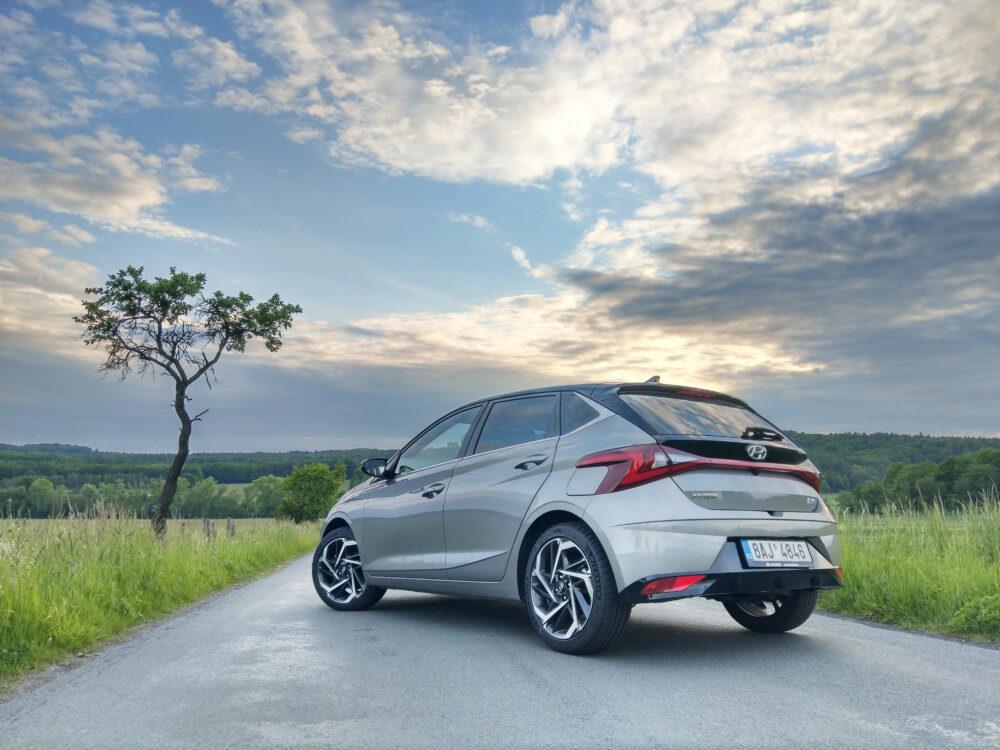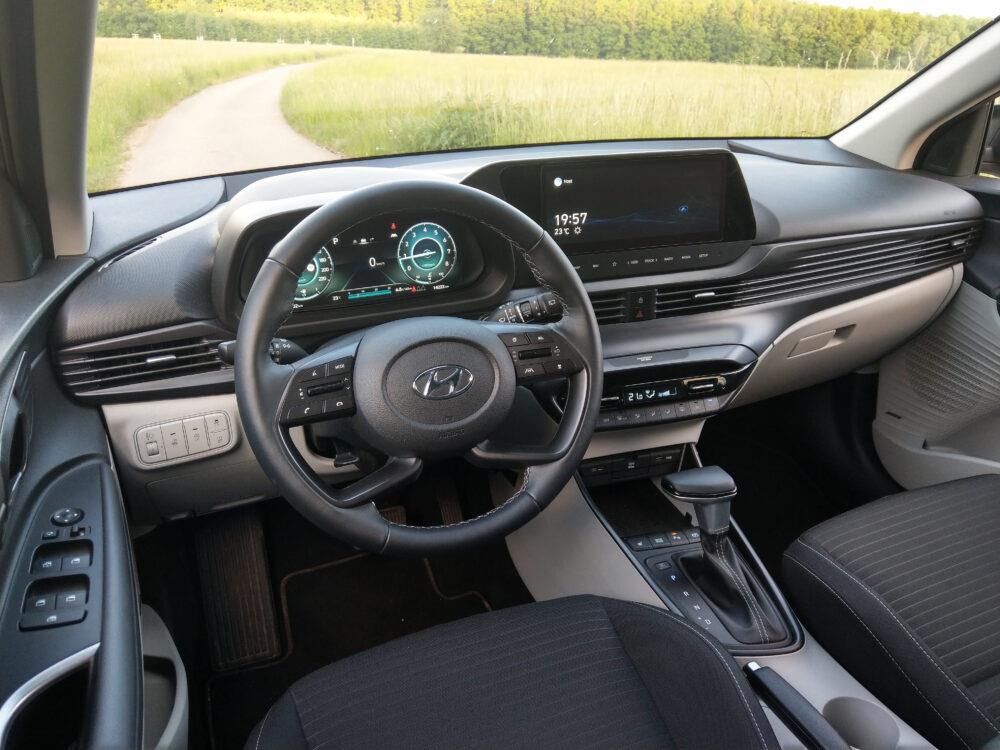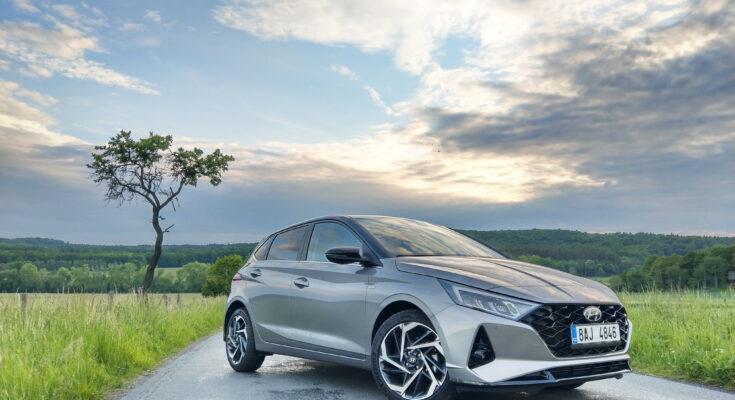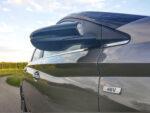The new third generation Hyundai i20 is designed fully in the spirit of the car company's current style, which certainly does not lack a certain boldness, timelessness, dynamism and great attention to detail.
With this approach, the new generation of the 20s quite successfully enters the fight against the Czech favorite, which in this segment is none other than Skoda Fabia.
We currently sat in a very decent i20 in the STYLE trim level, under the hood of the tested car was a quite potent mild hybrid three-cylinder drive unit, which cooperated very well with a seven-speed dual-clutch DCT automatic.

Pleasant external shapes and a dynamic cut are the main advantages of the exterior of the new generation i20. The front part impresses with a relatively voluminous mask, which is directly connected to the sharply shaped front lamps.
From the side profile, there is also little to criticize the car. This part has a distinctly wedge-shaped profile and an effectively short overhang of the rear part of the body.
The rear part then became the weakest part of the whole car for me, of course this is a purely subjective feeling, but unfortunately I could not get used to the shape of the rear lamps. Their horizontal connection is definitely effective, but the fork ending is too alien for me.
Overall, however, I evaluate the new form of the i20 positively, the tested piece was additionally enriched with additional equipment with a black painted roof and handsome seventeen-inch wheels.

The interior of the car is traditionally clear and ergonomically well managed. Its weak points include the presence of harder and cheap-looking plastics. However, this is a feature that can definitely be expected in this segment.
The dashboard itself has interesting ribbing, which, together with the shaping of the exterior mirrors, evokes memories of the interior of an unnamed Japanese premium car manufacturer.
But let's stay with the dashboard, we are sitting in the highest STYLE equipment, so it is dominated by a pair of equally large (diagonal 10.25") displays. I have already encountered the excellent graphics of both displays in the recently tested new generation of the Tucson model.
The instrument cluster in front of the driver offers a fully digital display that informs you of everything you need, in a graphically pleasing and clear environment. The main display of the on-board infotainment is slightly tilted towards the driver and, similarly to the display of the instrument cluster itself, it offers a very pleasant graphic environment. A certain degree of personalization of the environment is also a matter of course, so getting to know its controls will definitely take some time.
Its basic display, which combines a clock with simple graphics, which transitions into a simplified display of the current map from the navigation, became a very elegant motif for me. A pleasant and ever-changing detail.
I also have to praise the sporty four-spoke steering wheel, after my experience with the Tucson model, it made a good impression on me even in the new 20s. Its controls have a logical and intuitive arrangement, the processing and proportions of the steering wheel are very user-friendly.
The new generation will also surprise you with the sufficient spaciousness of the interior, which also prevails in the rear positions. The luggage compartment then grew between generations to a respectable 352 liters of volume (in the case of the mild hybrid to 262 liters).

The Hyundai i20 is currently available with three petrol engines, the basis of which is a four-cylinder 1200 with a power of 62 kW. We also have a turbocharged liter three-cylinder with a power of 74 kW, and the top of the range is the announced three-cylinder with mild hybrid technology.
From the wide range of engines offered, we currently tried the top mild hybrid, which has a very decent output of 120 horsepower (88 kW) and a torque of 200 Nm.
The liter three-cylinder doped with mild hybrid technology, under the hood of the "light" twenty, became a very pleasant surprise for me. Its three-cylinder performance is only minimally reflected in the cabin, the main advantage then becomes sufficient power, which can give the car a very decent workout. This technology works with a 48V system trying to save fuel and reduce emissions. In addition, the system adds torque to the internal combustion engine during acceleration itself.
In practice, you will recognize the functioning of the mild hybrid system in that the engine switches off much earlier (for example, when approaching an intersection), in the case of the activated eco mode, the car also quite often "sails" and helps the engine with the already announced acceleration. This is quite noticeable on the car, for example, the acceleration when approaching the highway is slightly surprising for a small three-cylinder engine.
In the case of the tested piece, we tried cooperation with a seven-speed dual-clutch DCT automatic, which shifts very smoothly and logically, thus perfectly underlining the overall comfortable tuning of the car. And consumption? During the editorial week, I averaged around 6.5 liters / 100 km.
The Hyundai i20 traditionally offers 3 driving modes: Eco, Comfort and Sport. The difference in driving modes is clearly visible on the car. Eco mode noticeably dampens the car and the already announced "sailing" comes next. In sports mode, there is a considerable revitalization, the car reacts differently to the gas pedal, the change also comes in the operation of the automatic transmission. But the Comfort mode becomes the classic golden mean.
There are no problems with the behavior of the chassis or steering. The chassis will offer a neutral position, which has sufficient confidence in corners combined with a considerable amount of comfort. Likewise, the steering, which is not unnecessarily overpowered and offers sufficient feedback from the wheels.

You can buy the new generation Hyundai i20 at a promotional price starting at CZK 279,990 including VAT. This is the basic variant with Start equipment, a 1.2-liter engine and a five-speed manual transmission. You can buy the basic turbocharged liter from 329,990 CZK and the mild-hybrid tested by us from 429,990 CZK including tax. Hyundai i20 is also available in COMFORT, SMART, N Line, STYLE and N Line STYLE trim levels.
The new generation Hyundai i20 definitely has a lot to offer, its exterior is dynamic and imaginative, the interior is spacious and can be richly equipped. The driving characteristics of the car are universal and the dynamics of the mild hybrid version are beyond expectations.
Source: Author's text
Image source: Author's own photos

























